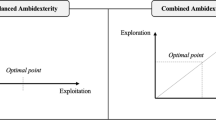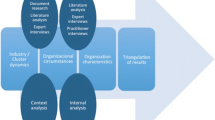Abstract
The last chapter of the book challenges the theoretical conclusions as well as the empirical findings established in the remaining chapters. Research from theoretical articles shows that the clustering of companies should have a positive effect on the concentration of employees equipped with specific knowledge and skills and should result in lower transaction costs and knowledge spillover among entrepreneurs. Soft, socio-cultural factors supporting the creation of informal partnerships between companies are also significant. Non-codified knowledge linked to a specific regional environment is the main source of competitive advantage in smaller industrial districts and natural clusters. These theoretical postulates were empirically verified with examples of the bijouterie and the glass industry (commodities of utility and other specific glass). The importance of the existence of research institutions cooperating with local companies was verified with the example of the textile industry, in which both a natural cluster and a cluster organisation coexist. A prime motive for clustering is the expectation of innovation. The positive impact of clustering on innovation has been demonstrated in most of the examined industries.
Access this chapter
Tax calculation will be finalised at checkout
Purchases are for personal use only
Similar content being viewed by others
References
Becattini, G. (1978). The development of light industry in Tuscany: An interpretation. Economic Notes, 3(2), 107–123.
Branco, A., & Lopes, J. C. (2018). Cluster and business performance: Historical evidence from the Portuguese cork industry. Investigaciones de Historia Económica, 14(1), 43–53. https://doi.org/10/ggdkzm.
Brusco, S. (1982). The Emilian model: Productive decentralization and social integration. Cambridge Journal of Economics, 6(2), 167–184.
Fujita, M., & Krugman, P. (2004). The new economic geography: Past, present and the future. Papers in Regional Science, 83(1), 139–164. https://doi.org/10/cfm4x8.
Krugman, P. (1991). Geography and trade. Cambridge: MIT Press.
Krugman, P. (1994). Complex landscapes in economic geography. American Economic Review, 84(2), 412–416.
Krugman, P. (1995). Development, geography and economic theory. Cambridge: MIT Press.
Lundvall, B.-A. (1992). National systems of innovation. Towards a theory of innovation and interactive learning. Pinter Publishers.
Ottaviano, G. I. P., & Thisse, J.-F. (2005). Environment and planning A: Economy and space. Environment and Planning A: Economy and Space, 37(10), 1707–1725. https://doi.org/10/frv2pq.
Piore, M., & Sabel, C. (1984). The second industrial divide: Possibilities for prosperity. New York: Basic Books.
Saxenian, A. (1991). The origins and dynamics of production networks in silicon valley. Research Policy, 20(3), 423–437. https://doi.org/10/bvfxpc.
Scott, A. J. (1998). Flexible production systems and regional development. International Journal of Urban and Regional Research, 12(2), 171–175. https://doi.org/10/fmhn2d.
Scott, A. J., & Storper, M. (1987). High-technology industry and regional development: A theoretical critique and reconstruction. International Social Science Journal, 122(2), 215–232.
Skala, M., & Rydvalova, P. (2021). Evolving insight of localization theories into cluster existence. In M. Zizka & P. Rydvalova (Eds.), Innovation and performance drivers of business clusters – An empirical study. New York: Springer Nature.
Woodward, D., & Guimaraes, P. (2009). Porter’s cluster strategy and industrial targeting. In Targeting regional economic development. Routledge.
Zizka, M., Pelloneova, N., & Skala, M. (2021). Theory of clusters. In M. Zizka & P. Rydvalova (Eds.), Innovation and performance drivers of business clusters – An empirical study. New York: Springer Nature.
Author information
Authors and Affiliations
Corresponding author
Editor information
Editors and Affiliations
Rights and permissions
Copyright information
© 2021 The Author(s), under exclusive license to Springer Nature Switzerland AG
About this chapter
Cite this chapter
Skala, M., Zizka, M., Rydvalova, P. (2021). Summary and Discussion of Research into Natural and Institutionalised Cluster Organisations: Conclusions. In: Zizka, M., Rydvalova, P. (eds) Innovation and Performance Drivers of Business Clusters. Science, Technology and Innovation Studies. Springer, Cham. https://doi.org/10.1007/978-3-030-79907-6_12
Download citation
DOI: https://doi.org/10.1007/978-3-030-79907-6_12
Published:
Publisher Name: Springer, Cham
Print ISBN: 978-3-030-79906-9
Online ISBN: 978-3-030-79907-6
eBook Packages: Economics and FinanceEconomics and Finance (R0)




